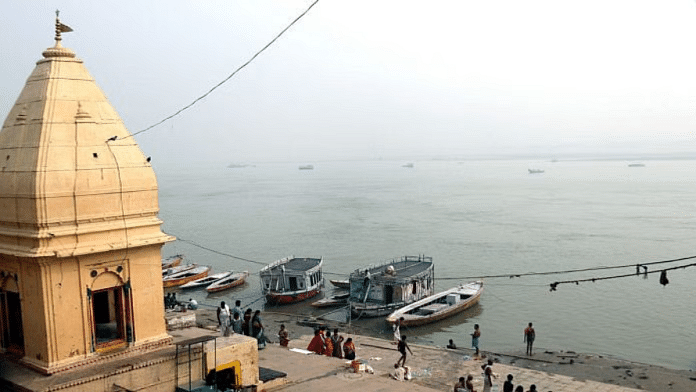New Delhi: Groundwater and not glacier melts sustain the Ganga during the hot summer months in India, according to the first ever comprehensive isotope study done by the Indian Institute of Technology-Roorkee (IIT-Roorkee) to pin groundwater aquifers as a primary source.
“One of the biggest takeaways of this study is that Ganga is not drying because of groundwater depletion. It is drying because of over-extraction, excessive diversion and neglect of tributaries,” Abhayanand Singh Maurya, Department of Earth Sciences, IIT Roorkee, and the lead author of this study, said.
The study, he said, confirms that groundwater continues to be the “hidden lifeline” of the Ganga. In previous studies, which primarily rely on satellite observations, glacier and snow melting was believed to be the primary sources of the Ganga.
The study, published 29 July in the journal Hydrological Processes, highlighted that glacier melts had a negligible role to play in sustaining the Ganga’s water flow. In fact, beyond the Himalayan foothills, its contribution as a source of river water was negligible, the study .
The findings, according to Karan Bir Singh Sidhu, former chief secretary of Punjab and former principal secretary, irrigation, will have far-reaching implications for water management.
During the course of the study, researchers found that the middle plain segment of Ganga—stretching up to 1,200 km—which is also a crucial pocket for agriculture and industry, exhibits the “most significant” river-groundwater interaction.
“Here, the groundwater discharge increases the river’s volume by roughly 120% compared to its initial volume at the segment’s beginning,” the study read.
The findings, which were led by nearly two decades of in situ data, showed that across most of the central Ganga plain, the groundwater levels were stable. This suggested that the reduced summer flow was primarily because of factors like increased human activities and not groundwater depletion.
Also Read: Is Ganga really self-cleaning? Here’s what science says
Study findings
The analysis by IIT Roorkee scientists, carried out using a full-scale isotopic analysis of the Ganga from its Himalayan origins to its deltaic end, including its major tributaries.
The isotopic analysis of a river involves using the ratios of different elements—hydrogen and oxygen—to understand factors like water sources, movement and its interactions within a river system. This technique helps scientists get a sense of the river’s groundwater interaction, precipitation patterns, and even the impact of human activities on the river.
IIT-Roorkee director K.K.Pant said that the findings will go a long way in understanding the patterns of other Indian rivers. And understanding these patterns will help policymakers find more effective ways to rejuvenate them.
“For a sustainable Ganga, we will need to protect and recharge our groundwater aquifers. This will also be key in chalking out strategies for rejuvenating other rivers,” Pant said.
The study has divided the river’s course into three primary sections—birth, the middle section and the extension. While pointing out that glacier melting as a source becomes basically negligible after the Himalayan foothills, it also stresses that after the river reaches Patna, Bihar, apart from groundwater, tributaries like Ghaghara and Gandak also start becoming dominant contributors.
Sidhu, in a blog post, says the findings “demands that government schemes like Namami Gange and Jal Shakti Abhiyan prioritize aquifer recharge, regulated pumping, wetland revival, and tributary restoration, rather than focusing predominantly on surface-level river cleaning or flow augmentation from distant dams.”
“This is a decisive moment. The science is clear, the hydrological linkages undeniable, and the stakes existential,” Sidhu said in a blog post, adding that the governments must “act boldly, farmer unions must embrace reform grounded in ecological reality, and experts must steer the public debate with evidence and solutions.”
“If India fails to integrate these lessons, the spectre of dry rivers and collapsing aquifers will define our collective future,” he said.
(Edited by Tony Rai)
Also Read: ‘Today’s the day!’ $1.5 bn ISRO-NASA partnered NISAR satellite set for liftoff






